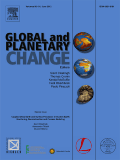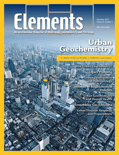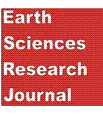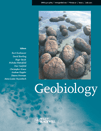
GLOBAL AND PLANETARY CHANGE
Scope & Guideline
Exploring the Dynamics of Our Changing Planet
Introduction
Aims and Scopes
- Paleoclimatology and Geological History:
Research on past climate changes and geological events, utilizing proxies such as isotopic records, sediment analysis, and fossil studies to understand Earth's climatic evolution. - Climate Change Impacts and Adaptation:
Studies focusing on the effects of climate change on ecosystems, hydrology, and human societies, including assessments of vulnerability and adaptation strategies. - Biogeochemical Cycles and Ecosystem Dynamics:
Exploration of the interactions between biological processes and geochemical cycles, including studies on carbon, nitrogen, and sulfur cycles and their implications for climate and environmental health. - Hydrological and Oceanographic Processes:
Investigating the dynamics of water systems, including riverine, lake, and ocean processes, and their responses to climatic variations and anthropogenic influences. - Environmental Modeling and Simulation:
Development and application of models to simulate environmental processes and predict future changes in climate, hydrology, and ecosystems. - Human-Environment Interactions:
Research examining the impacts of human activities on natural systems, including land use changes, pollution, and resource management.
Trending and Emerging
- Climate Change and Biodiversity Interactions:
Research addressing how climate change affects biodiversity, including species distribution shifts, ecosystem resilience, and conservation strategies, is gaining prominence. - Extreme Weather Events and Impacts:
Studies focusing on the increasing frequency and intensity of extreme weather events, such as floods, droughts, and heatwaves, are becoming more common, reflecting a growing concern over climate variability. - Anthropogenic Influences on Natural Systems:
There is a rising trend in examining how human activities, such as land use changes and pollution, are impacting natural systems, emphasizing the need for sustainable practices. - Integrated Climate-Hydrology Modeling:
Research involving comprehensive models that integrate climate and hydrological processes to better understand water availability and management under changing climatic conditions is on the rise. - Paleoenvironmental Reconstructions:
Emerging techniques and methodologies for reconstructing past environments, particularly through multi-proxy approaches, are increasingly featured, enhancing our understanding of historical climate dynamics.
Declining or Waning
- Volcanism and Climate Interactions:
Though historically significant, research specifically linking volcanic activity to climate changes has become less prominent, possibly due to a broader focus on anthropogenic climate drivers. - Geomorphological Studies:
While geomorphology remains relevant, the emphasis on detailed geomorphological studies has declined as the journal increasingly prioritizes global and systemic environmental change analyses. - Ocean Acidification Studies:
Research specifically focused on ocean acidification, while still important, has seen reduced publication frequency, likely overshadowed by broader climate change narratives. - Paleoecology of Non-Marine Environments:
There has been a noted decrease in studies focusing solely on non-marine paleoecological systems, with a shift toward integrated approaches that encompass marine and terrestrial interactions. - Regional Climate Studies:
While regional studies are still relevant, there is a trend toward more global-scale assessments, leading to a decline in publications focusing solely on localized climate phenomena.
Similar Journals

Limnology and Oceanography Letters
Advancing knowledge in aquatic ecosystems.Limnology and Oceanography Letters, published by WILEY, is an esteemed peer-reviewed journal dedicated to advancing our understanding of freshwater and marine systems. With an impressive Q1 ranking in both Aquatic Science and Oceanography, this journal has established itself as a pivotal resource for researchers, professionals, and students alike. Since its inception as an Open Access journal in 2016, it has provided unrestricted access to high-quality, innovative research articles that illuminate diverse aspects of aquatic ecosystems and their dynamics. With a publication history from 2016 to 2024 and a significant presence in Scopus rankings—placing it in the top 6% for Oceanography and the top 8% for Aquatic Science, this journal not only fosters scholarly communication but also encourages interdisciplinary collaboration. Addressing pressing issues related to water resource management, climate impact, and ecological integrity, Limnology and Oceanography Letters remains essential for those dedicated to the science of aquatic environments.

Elements
Transforming Discoveries into Knowledge for TomorrowElements is a premier academic journal published by the Mineralogical Society of America, dedicated to advancing knowledge in the fields of Earth and Planetary Sciences and Geochemistry and Petrology. Since its inception in 1973, this journal has established itself as a leading source of impactful research, evidenced by its prestigious Q1 rankings in both categories in 2023, placing it among the top journals globally with Scopus ranks of #18 and #23, respectively. Elements is uniquely positioned to foster interdisciplinary dialogue, offering a platform for groundbreaking studies that explore the fundamental processes shaping our planet. Although it operates without an open access model, its rigorous peer review process guarantees the integrity and quality of published work, making it an essential resource for researchers, professionals, and students eager to stay abreast of the latest developments in mineralogy and earth sciences. With a commitment to excellence, Elements continues to push the boundaries of our understanding of geological phenomena and their implications for both science and society.

EARTH AND PLANETARY SCIENCE LETTERS
Connecting Geoscience Insights to Global ChallengesEARTH AND PLANETARY SCIENCE LETTERS, published by ELSEVIER, stands as a premier academic journal in the fields of Earth and Planetary Sciences, Geochemistry and Petrology, Geophysics, and Space and Planetary Science. Since its inception in 1966 and continuing to 2024, the journal has consistently maintained an impressive reputation, ranking in the top quartile (Q1) across several categories, highlighting its vital role in advancing scholarly research. With a Scopus ranking of #4 in both Geophysics and Geochemistry and Petrology, and a notable 97th percentile in multiple Earth sciences categories, EARTH AND PLANETARY SCIENCE LETTERS provides a platform for groundbreaking research, encouraging rigorous investigation and dissemination of knowledge. While not available as an Open Access publication, the journal remains highly accessible to academics and professionals worldwide, providing invaluable insights and fostering discussions that influence the future of Earth sciences. Whether you are a researcher, educator, or student, this journal is a crucial resource for understanding our planet and its processes.

Earth Interactions
Illuminating Earth’s Interactions for Tomorrow’s ScholarsEarth Interactions is a prominent journal that serves as a critical platform for interdisciplinary research in the field of Earth and Planetary Sciences. Published by the American Meteorological Society, this journal has established itself as a key resource for scholars, researchers, and professionals dedicated to understanding Earth's complex systems and their interactions. With an impressive Q1 ranking in the category of Earth and Planetary Sciences for 2023, it reflects a commitment to high-quality scholarship and impactful contributions to the field. The journal, with its dedicated coverage from 2004 to 2024, encompasses a wide array of topics, providing comprehensive insights into geological, atmospheric, and environmental phenomena. Although it operates under a non-open access model, its significance is underscored by its placement in the top percentile of Scopus rankings (Rank #89/195), making it an exciting resource for those pursuing advanced studies and applications related to Earth's systems.

Earth Sciences Research Journal
Empowering Scholars with Open Access KnowledgeThe Earth Sciences Research Journal, published by the UNIV NACIONAL DE COLOMBIA, serves as a pivotal platform for the dissemination of knowledge in the diverse field of Earth and Planetary Sciences since its inception. With an ISSN of 1794-6190 and an E-ISSN of 2339-3459, this Open Access journal has been committed to providing unrestricted access to high-quality research since 2004. Located in Bogotá, Colombia, it has gained recognition within the academic community, achieving a Q3 quartile ranking in Earth and Planetary Sciences and notable Scopus rankings, which further underscores its relevance and reach. Its scope encompasses varied research topics, making it an essential resource for researchers, professionals, and students alike, seeking to contribute to or stay informed on the latest developments in the Earth sciences up to the year 2024. The journal not only anticipates cutting-edge research but also emphasizes collaborative dialogues among global experts, driving forward the conversation on critical issues facing our planet.

AGU Advances
Fostering Collaboration in Earth and Planetary SciencesAGU Advances, published by the American Geophysical Union, is a premier Open Access journal established in 2020, dedicated to advancing the field of Earth and Planetary Sciences. With an impressive Q1 ranking in the 2023 category of Earth and Planetary Sciences (miscellaneous) and a Scopus rank of #81/195, it serves as a vital platform for researchers, professionals, and students to share their findings and innovations. The journal fosters a collaborative environment, encouraging interdisciplinary approaches and high-quality research that addresses the fundamental questions of our planet and beyond. With its commitment to accessibility, AGU Advances ensures that cutting-edge research is available to a global audience, supporting the dissemination of knowledge that is crucial for addressing current and future scientific challenges. For those keen on contributing to or accessing groundbreaking studies in this dynamic field, AGU Advances is an invaluable resource.

Earth and Space Science
Championing Open Access for Earth and Space Innovations.Earth and Space Science, published by the American Geophysical Union, is a distinguished open-access journal that has profoundly impacted the realms of earth and planetary sciences as well as environmental science since its inception in 2014. With impressive rankings, including Q1 in both Earth and Planetary Sciences and Environmental Science for 2023, this journal ranks 38th out of 195 in the general Earth and planetary sciences category and 51st out of 219 in environmental science, showcasing its commitment to high-quality research dissemination. The journal serves as a vital platform for researchers, professionals, and students, fostering the exploration of critical topics and advancements within these pivotal fields. With an accessible format, researchers can benefit from the rich content available, furthering their knowledge and ensuring that groundbreaking discoveries reach a broader audience. The journal's ongoing commitment to open access aligns with contemporary trends in scholarly communication, emphasizing inclusion and collaboration in tackling pressing global challenges.

Geobiology
Leading the Charge in Interdisciplinary Earth ResearchGeobiology, published by WILEY, is a prestigious journal at the forefront of interdisciplinary research in Earth and Planetary Sciences, Ecology, and Environmental Science. With an ISSN of 1472-4677 and an E-ISSN of 1472-4669, this journal has achieved remarkable recognition as evidenced by its Q1 categorization in multiple relevant fields, including Earth and Planetary Sciences, Ecology, and Environmental Science, according to the 2023 quartile rankings. Covering a diverse range of topics from biogeochemical cycles to the impacts of climate change on biodiversity, Geobiology serves as a vital platform for researchers, professionals, and students alike. The journal boasts impressive Scopus rankings, placing it within the top tiers of its fields, which is indicative of its significant influence and contribution to advancing knowledge. Although it does not operate under an Open Access model, Geobiology ensures widespread reach and accessibility, allowing for impactful dialogues within the scientific community. Researchers are encouraged to submit their findings and engage with cutting-edge studies to advance our understanding of the interplay between biological and geological processes.

Vietnam Journal of Earth Sciences
Bridging Local Insights with Global Impact in Earth SciencesThe Vietnam Journal of Earth Sciences, ISSN 0866-7187, is a premier publication from the Publishing House Science and Technology based in Viet Nam, dedicated to fostering advancements in the field of Earth and Planetary Sciences. Operating under a Q2 ranking in the 2023 category of Earth and Planetary Sciences (miscellaneous) and positioned at Rank #62 out of 195 in its general category on Scopus, this journal serves as a critical platform for researchers, professionals, and students seeking to disseminate and engage with high-quality scientific findings. Despite being part of the non-open access model, the journal is committed to providing compelling content, encompassing a range of topics from geological hazards to environmental sustainability, ensuring its relevance and contribution to both local and international scientific communities. With coverage that spans from 2018 to 2024, the journal is poised to continue its role in addressing pressing Earth science issues and fostering collaborations among scholars in an increasingly interconnected world.

TERRESTRIAL ATMOSPHERIC AND OCEANIC SCIENCES
Pioneering Discoveries in Terrestrial SciencesTERRESTRIAL ATMOSPHERIC AND OCEANIC SCIENCES, published by SpringerNature, is a distinguished peer-reviewed journal that has been an essential platform for innovative research in the fields of atmospheric science, oceanography, and Earth and planetary sciences since its inception. With an Open Access policy established in 1990, the journal ensures wide dissemination of knowledge, allowing researchers, professionals, and students to access cutting-edge findings without restrictions. Based in Switzerland and featuring a comprehensive coverage from 1996 to 2024, the journal currently holds a Q3 ranking across various categories, indicating its growing significance in the scientific community. Although it is positioned within the 39th percentile in Earth and Planetary Sciences, its commitment to fostering high-quality research makes it a valuable resource for advancing understanding of terrestrial environments and their interconnections. Researchers seeking a platform for their work in atmospheric and oceanic sciences will find TERRESTRIAL ATMOSPHERIC AND OCEANIC SCIENCES to be an ideal venue for sharing their insights with a global audience.